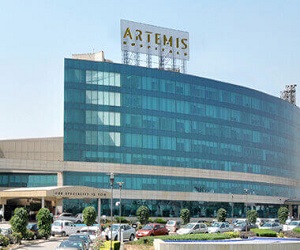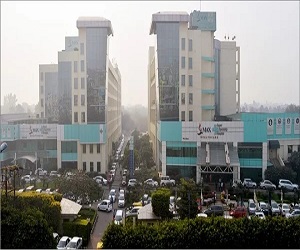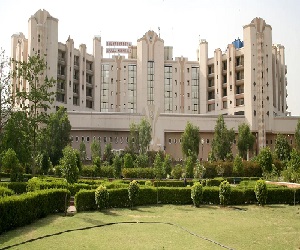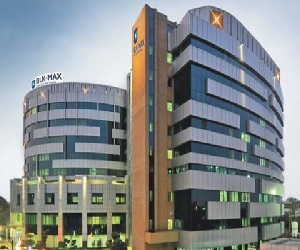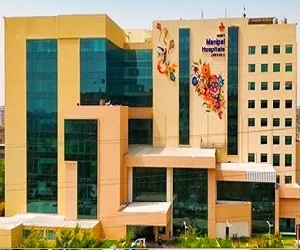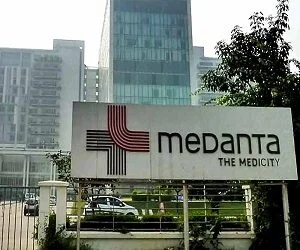Overview
When a partial blockage occurs in a coronary artery, bypass surgery becomes necessary to redirect blood flow through an alternative route, circumventing the obstruction. This intricate procedure involves extracting a healthy blood vessel from either the chest, arms, or legs, which is then utilized to create a new pathway around the blocked segment. By doing so, the flow of blood is improved, ensuring adequate oxygen supply to the heart muscle and reducing the risk of complications associated with the blockage.
Why is CABG Surgery required?
CABG (Coronary Artery Bypass Grafting) is required to restore blood flow to the heart muscle when coronary arteries are significantly blocked or narrowed. This surgical procedure alleviates symptoms, prevents complications like heart attack, and improves overall heart function and quality of life.
- Indication: CABG is required when significant blockages or narrowing occur in the coronary arteries, impairing blood flow to the heart muscle.
- Symptom Alleviation: The procedure aims to alleviate symptoms such as chest pain (angina) and shortness of breath, improving the patient’s quality of life.
- Prevention of Complications: CABG helps reduce the risk of serious complications associated with coronary artery disease, including heart attack and heart failure, by restoring adequate blood flow to the heart.
- Surgical Technique: During CABG, a healthy blood vessel is grafted onto the coronary artery beyond the blockage, creating a new pathway for blood flow to bypass the obstruction.
- Long-Term Benefits: CABG provides long-term relief from symptoms, improves quality of life, and increases life expectancy for individuals with coronary artery disease, contributing to overall heart health and well-being.
CABG Surgery
During the procedure, patients are admitted to the hospital and undergo surgery that typically lasts between 3 to 6 hours. General anesthesia is administered to ensure the patient is comfortable throughout the procedure. The extent of blockages determines the number of bypasses needed, thus influencing the duration of the surgery.
Throughout the procedure, patients have a tube inserted into their mouth to ensure continuous breathing while the heart is operated on. In India, the cost of Coronary Artery Bypass Grafting (CABG) treatment may fluctuate based on the specific surgical technique employed.
- On-pump coronary bypass surgery: In the surgical process, a lengthy incision is made in the patient’s chest, allowing access to the heart. External machinery regulates the body’s blood and oxygen flow during the procedure. The ribcage is then opened to expose the heart, which is temporarily halted with medication. A machine takes on the heart’s function, ensuring blood and oxygen circulation until the procedure’s completion. Blood flow is rerouted through a healthier blood vessel positioned above and below the obstructed arterial passage.
- Off-pump surgery: This surgery can be performed on a beating heart, meaning the heart is still moving during the procedure. Specialized equipment is utilized to stabilize the area of the heart requiring surgery, enabling doctors to proceed with precision. However, this approach is not as common as performing surgery on a stopped heart.
- Minimally invasive or keyhole surgery: Minimally invasive surgery, also known as keyhole surgery, involves performing procedures through small incisions using specialized instruments and a camera. It offers benefits such as reduced pain, shorter hospital stays, faster recovery, and minimal scarring compared to traditional open surgery.
After Surgery
Following the surgery, patients are typically transferred to the Intensive Care Unit (ICU) for monitoring and observation for a few days. A breathing tube may remain in place until the patient is able to breathe independently. Assuming no complications arise, patients can usually expect to be discharged from the hospital within a week after the surgery.
Heart Surgeries cost in India are as follow
| Treatment | Cost in USD | Hospital Stay |
|---|---|---|
| CABG Surgery/Heart Bypass Surgery | 3500-5500 | 7-8 Days |
| CABG Minimally Invasive Surgery | 5500-6500 | 7-8 Days |
| Heart Valve Replacement (MVR/AVR) | 6500-7500 | 7-8 Days |
Frequently Asked Questions:
Q:How long does it take to recover from CABG surgery?
A:Recovery time varies for each patient, but most individuals can expect to spend a few days in the hospital and several weeks at home recovering. Physical therapy and cardiac rehabilitation may be recommended to aid recovery.
Q:Will I need to undergo any tests before CABG surgery?
A:Yes, before CABG surgery, you will likely undergo several tests, including blood tests, electrocardiogram (ECG), echocardiogram, cardiac catheterization, and possibly imaging tests like angiography, to assess your heart’s condition and determine the best course of treatment.
Q:How soon can I return to normal activities after CABG surgery?
A:The timeline for returning to normal activities varies for each patient but typically involves a gradual return to light activities within a few weeks and resumption of normal activities within a few months post-surgery. Your healthcare team will provide guidance on when it’s safe to resume specific activities.
Q:How do I choose a hospital and surgeon for CABG surgery in India?
A:Kindly share your report.

